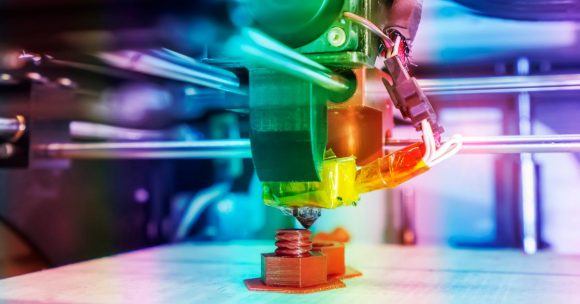The practice of 3D printing is gaining momentum around the globe and companies are noticing that the application of 3D printing in their supply chain process is assisting their business. 3D printers inject materials to build a three-dimensional object. In a world where customers want everything fast, this printing technology could see companies benefit by producing parts at speed – ready to use in their operations.
If you are a company producing parts with a 3D printer, you are quite possibly placing your company ahead of the game. Parts can take months to develop, redefine and improve. This printing process can streamline the production process into a few hours or even a day.
An article by Supply Chain Brain emphasizes that companies at the forefront of innovation have embraced 3D printing as a much faster and more secure pathway from concept to market. “The technology has become a foundation for companies in industries as diverse as automobile manufacturing to medical supply because of the ability to create, iterate and produce exclusively on single-platform cloud-based systems.”
Here are some areas where 3D printing is used:
- Medicine: for producing implants, prosthetics and veneers.
- Automotive industry: car manufacturers are using 3D printing to create parts.
- Aerospace: parts for aircrafts.
UK-based Supply Chain Consulting Group is a leading consultancy operating in the UK, Europe, Asia, Africa, Australia, and US. It reports that 3D printing is becoming commonplace, disrupting traditional businesses. “Supply chains across diverse industries such as aerospace, healthcare and electronics are devising solutions to enable them to take advantage of market opportunities. Doctors can print a model of a person’s heart before tackling invasive surgery and logistics companies can build drones to address delivery challenges.”
Logistics providers must adapt
Logistics giant DHL says the increase in the adoption of 3D printing brings more opportunities for logistics providers such as growth in the scale and complexity of regional logistics networks capable of supporting print production and of business-to-business (B2B) printing services and delivery. “While a world of widespread 3D printing is still in its early stages, there is already a need to supply polymers and raw materials, and here logistics providers must adapt their services.”
DHL adds that 3D printing can improve efficiency by simultaneously producing numerous customized end-user parts. “The increase in demand for mass personalized products provides an opportunity for businesses to adopt and leverage the capabilities of 3D printing technology.”
According to a report by Globe Newswire says, “In light of this uncertainty, 3D printing may improve supply chain management, which might impact the logistical relationship between suppliers and buyers for specific goods or parts.”
About the author
Sharl is a qualified journalist. He has over 10 years’ experience in the media industry, including positions as an editor of a magazine and Business Editor of a daily newspaper. Sharl also has experience in logistics specifically operations, where he worked with global food aid organisations distributing food into Africa. Sharl enjoys writing business stories and human interest pieces.











